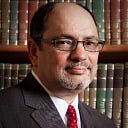History of Memorial Day: Which War?

Memorial Day was not universally recognized as a shared American Holiday until after World War I. But that’s not how it started in the United States. When did it begin?
Civil War
Following the American Civil War or the “War Between the States,” as it was known in the South, various locations began decorating the graves of fallen soldiers with flowers and flags, as I’ve written previously. This began in the mid to late 1860s across the country, as almost every community had been touched by loss from the country-wide conflagration. Over 600,000 men and women had died, more than any war that Americans were involved in, including the combined losses suffered in WWI and WWII — because we were both sides of that war.
In 1866 the secretary of the Ladies Memorial Association in the city of Columbus, Georgia wanted to erect a memorial to those fallen during the Civil War but did not have the funds. They recognized, however, that flowers were readily available to decorate graves. Secretary Mary Ann Williams wrote a letter that was published in March and April in more than two dozen newspapers across the US to:
“beg the assistance of the Press and the Ladies throughout the South to aid us in our efforts to set apart a certain day to be observed from the Potomac to the Rio Grande and be handed down through time a religious custom of the country to wreathe the graves of our martyred dead with flowers.”
In 1868, by the proclamation of General John A. Logan of the Grand Army of the Republic (Union), these decoration services were unified on May 30 as Decoration Day. 5,000 mourners met at Arlington National Cemetery to place flowers and ribbons on the graves of 20,000 Union and Confederate soldiers. Union veteran Generals and future Presidents James Garfield and Ulysses S. Grant were in attendance.
At least twenty-five cities in America claim that they are the birthplace of this practice and this holiday. Boalsburg, Pennsylvania, an American village on the National Historic Register makes this claim on a sign at the entrance to the village near State College, PA.
The Gettysburg Battlefield, following Abraham Lincoln’s Gettysburg Address there, became a popular location for memorializing the 3,500 fallen, beginning in 1868. The Gettysburg community has since had a parade there for a century and a half. In 1882, the holiday was first called Memorial Day.
However, Southern states, feeling that the national celebrations emphasized Union soldiers, had their own separate memorial services to honor the fallen Confederate soldiers held on different dates in each state. Confederate Memorial Day is a state holiday in Alabama, Florida, and Georgia on the fourth Monday in April. In Mississippi, it is observed on the last Monday in April. In South Carolina and North Carolina, it falls on May 10. Texas observes Confederate Heroes’ Day on January 19.
World War I
During the next great war that America fought, World War I, over 130,000 Americans died. This war effectively unified both North and South in a common shared experience of Memorial Day. May 30 was now a holiday to recognize all fallen American soldiers back to the American Revolutionary War.
It differs from Veterans Day, signified by the poppy, in that it uniquely honors fallen soldiers rather than surviving veterans. Hence, we fly our flags at half-mast until noon.
My old sociology professor at Berkeley, Robert Bellah taught that America is unique in that it has a “civil religion” with a shared non-denominational quasi-religious faith distinguished by fundamental beliefs, values, and rituals — especially rituals — that are parallel to one’s own chosen religion. He said that
“Memorial Day has acted to integrate the local community into the national cult.”
If so, Memorial Day has become one of the most sacred of these national rituals, a holiday for all Americans.
20th Century
It became a federal holiday only as recently as 1971 when its date was moved from May 30 — originally chosen for the day flowers optimally bloom — to the last Monday in May, to create a 3-day weekend. Some have claimed that this change along with the addition of golf tournaments and car races have eroded the remembrance of the holiday’s original purpose.
World War II
Most people think of WWII in reference to Memorial Day, it remains in the memory of those still living from the time of that war. And for good reason: more people, American and otherwise, died worldwide in WWII — military and civilian — than another war in history. This is depicted in the video linked below.
How do you celebrate Memorial Day?
Bill Petro, your friendly neighborhood historian
www.billpetro.com
If you enjoyed this article, please consider leaving a comment or subscribing to the news feed to have future articles delivered to your feed reader or your email.
